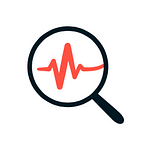AIOps vs Observability
If you search for the answer to “What is AIOps,” you’ll find a fairly standard definition. However, reviewing the results of that search showcases a problem: it’s difficult to understand the difference between Observability and AIOps. Because there are some similarities in the value use cases, such as — “receiving continuous insights which provide fixes and improvements via operations”, many people confuse or conflate the two. In fact, it’s so close, it seems like every Observability vendor has a “What is AIOps?” blog post to capture some search traffic. But AIOps and Observability, while similar, are not synonymous — we just need to define them more clearly.
Artificial Intelligence for IT Operations
When you apply machine learning to help improve IT Operations, the use cases are literally limitless. From optimizing resource usage to ensuring secure systems — the entire gamut of systems, processes, people and — yes — applications, all can be made better through automation and artificial intelligence, specifically machine learning.
Application performance use cases blur the lines between AIOps and Observability, though — so much so that some refer to AIOps as “CI/CD for Core Functions.” The similarities are why there are so many AIOps benefits that sound like Observability:
- Ingest performance data
- Identify and predict service outages
- Perform quick root cause analysis
- Deliver scaled services in the most efficient manner
But with AIOps, you could put this small phrase at the end of every statement: “ — across all IT systems and processes.”
The World of Application Observability
From old-school APM tools to a new generation of Observability platforms, application performance is the center of observability, generally defined as application instrumentation to provide a collection of performance metrics, log events and user traces to help identify and solve application problems.
Some Observability solutions have applied machine learning principles to the world of application performance — using statements like “detect performance anomalies,” “predict service outages” and “reduce the Mean Time To Repair (MTTR).”
It’s a natural move, especially given the similarity of data types from system to system. It’s a great place to apply some AI to become more efficient.
But IT Operations is so much more than just monitoring application performance.
AI-Powered Observability is NOT AIOps
No matter how much keyword click-bait the APM and Observability vendors grab around AIOps, the simple truth is that IT Operations is so much more than Application Operations, even DevOps and Site Reliability Engineering (SRE).
One of my favorite ways to highlight this difference is around the reporting of Anomaly Detection. Even the most basic intelligence built-in to IT tools starts with anomaly detection — from infrastructure monitoring to intrusion detection, application performance to Cloud resource optimization, anomaly detection is a critical function.
With so many systems, so many people and so many screens, anomalies have the potential to be just as overwhelming as the better-known alert storms that almost every tool vendor talks about removing.
That’s where different monitoring platforms stop and AIOps has to take over. The intelligence behind the AI algorithm allows these tools to move beyond anomaly detection to Anomaly Prioritization. Observability records the anomaly from one viewpoint, AIOps provides a holistic view. It is impossible for even the BEST observability tool to deliver, simply due to the fact that the observability tools don’t have a universal view of the anomalies within IT Operations. They only see application oriented anomalies. In truth, the same could be said of all the other individual toolsets — no matter how much intelligence is built-in, they simply lack the broad visibility to make the bigger decisions. The best AIOps tools bring an operations team to the next level of performance.
AIOps is NOT Application Observability
For the same reason, it’s important to understand that even the most comprehensive AIOps solution isn’t the same as an application Observability tool. More accurately, AIOps alone isn’t a complete replacement for ANY specialized IT operations system(such as intrusion detection, log analysis, cloud optimization, and so on.). Within any complex environment is the need for specialization — and in IT, these specialized tools require constant updating to handle new platforms, new technologies and new use cases.
The advantage of AIOps tooling is the focus on making overall operations smoother, more efficient, and more automatic — outside of the fray of constant change inside individual IT systems and environments.
What can AIOps do for you?
The reality is that every organization is going to get something different from AIOps, depending on their specific reality — the nature of their systems (including applications), their organizational structure, legacy tool usage, amount of performance data collected, reporting needs, etc.
No matter where you fall in AIOps maturity, the minimum truth is that anybody can reap the rewards of machine learning and AI by trying to become more automated, more responsive and more predictive in day-to-day operations. The reality is that the companies that strategically leverage AIOps will come out ahead in the digital transformation revolution.
By: John Lindley, InsightFinder Engineer
Learn more about InsightFinder’s AIOps with a free trial.
